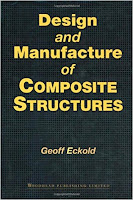Practical Design of Reinforced Concrete Buildings
Syed Mehdi Ashraf ... 452 pages - Publisher: CRC Press; 1st edition (September, 2017) ... Language: English - ISBN-10: 149876570X - ISBN-13: 978-1498765701 ...
This book will provide comprehensive, practical knowledge for the design of reinforced concrete buildings. The approach will be unique as it will focus primarily on the design of various structures and structural elements as done in design offices with an emphasis on compliance with the relevant codes. It will give an overview of the integrated design of buildings and explain the design of various elements such as slabs, beams, columns, walls, and footings. It will be written in easy-to-use format and refer to all the latest relevant American codes of practice (IBC and ASCE) at every stage. The book will compel users to think critically to enhance their intuitive design capabilities.
This book will provide comprehensive, practical knowledge for the design of reinforced concrete buildings. The approach will be unique as it will focus primarily on the design of various structures and structural elements as done in design offices with an emphasis on compliance with the relevant codes. It will give an overview of the integrated design of buildings and explain the design of various elements such as slabs, beams, columns, walls, and footings. It will be written in easy-to-use format and refer to all the latest relevant American codes of practice (IBC and ASCE) at every stage. The book will compel users to think critically to enhance their intuitive design capabilities.



















